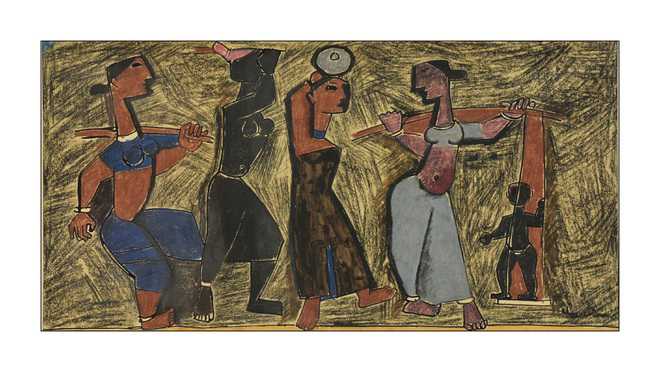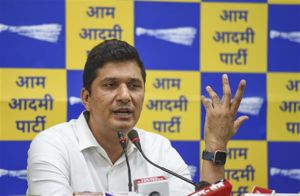
Amit Sengupta
As part of its massive annual Festival of the Arts, the India International Centre in New Delhi is showcasing the work and life and times of the forgotten but legendary Progressive Artists Group from October 12 to 25. Called Contextualising Progressive, Indian Art from the 20th Century, the show resurrects the original legends of modern Indian art, who broke through new content, technique and form in terms of rethinking Indian and European art forms, entering new thresholds of avant-garde, abstract and radical art, and moving away from the socialist or ‘nationalist’ comfort zones of prevailing art forms. The show is curated by eminent artists Vijay Kowshik and Gogi Saroj Pal.
“We want a dialogue with the new generation of the contemporary era with the greats of the past. We insist on an open-ended dialogue with new openings in thought and new reinterpretations of their life and work. We don’t want prejudiced or clichéd thinking. We want a true dialogue between the creative past and the current present,” says Pal.
The art movement originally started with greats such as FN Souza, MF Husain, SH Raza, HA Gade, SK Bakre, KH Ara and others, while anticipating and going through the ordeal of the Partition of India around 1947. It documented the trauma and despair of the era as tens of thousands across the border were killed or turned into refugees. Later, in the early 1950s, artists such VS Gaitonde and Krishen Khanna, both equally great, the joined the Progressive Artists Group.
“Indian Art in the 20th century sets out not only to showcase the Progressive Artists Group and its associates, but the forces that brought about its inception in India and outside, resulting in works of artists like not just Raja Ravi Varma but also Abanindranath Tagore and Rabindranath Tagore (of the Bengal School of Art). Further, it sets out to explore the forces that it set into motion, forces that informed Indian art henceforth. There is a constant engagement with colonialism and Euro-centricism, albeit occasionally Indian art contests, and sometimes collaborates with these. Perhaps, this is one of the reasons why the Progressive Artists Group and its associates have become not just feted artists but also the face of Indian art,” says curator and art historian Seema Bawa.
Also called the Midnight’s Children, much before the celebrated book in the backdrop of Indian independence by Salman Rushdie was penned, they wanted to discover the ideals of freedom in art forms in techniques, on the canvas, the idea of freedom of artistic and creative expression, the social purpose of art, revolutionary, national and nationalist art, and the art and creative process inspired by anti-imperialist struggles all over the world, inspired by the socialists, the anti-colonial struggles, and the Bolshevik and Chinese peasant revolution…
Though these artists tried to bridge the huge gulf between elitist art and the everyday lives and struggles of the people, the art forms were not didactic or propagandistic. Surely, the Indian freedom movement played an important role in the formation of this progressive paradigm shift in the Indian art movement, which was basically feminist, pro-working class and pro-poor, against capitalism and anti-war. Indeed, the movement was driven by the ideals and vision of utopian and radical thought, envisioning a humanity or human condition where there is equality, peace, freedom and justice.
Besides, they abhorred any kind of fanaticism, be it from the left of right-wing, and decided to carve their own language of free and open expression outside the rigidity and conformism of dogmatic thought. In that sense, they broke new ground in Indian and international art forms. Their doctrine was simple: “We painted with absolute freedom of content and techniques that they were governed by only sound principles of art like aesthetic order, plastic coordination and color composition.”
The show in Delhi would bring together contemporary artists, art lovers, critics, writers and students, in an eclectic and serious synthesis to enter a turbulent past of amazing and fabulous creativity. In the current context, where war cries loom large over ‘nationalist’ politics across the globe, the message by the ‘progressives’ resurrects an archival language of love, peace and freedom.



























